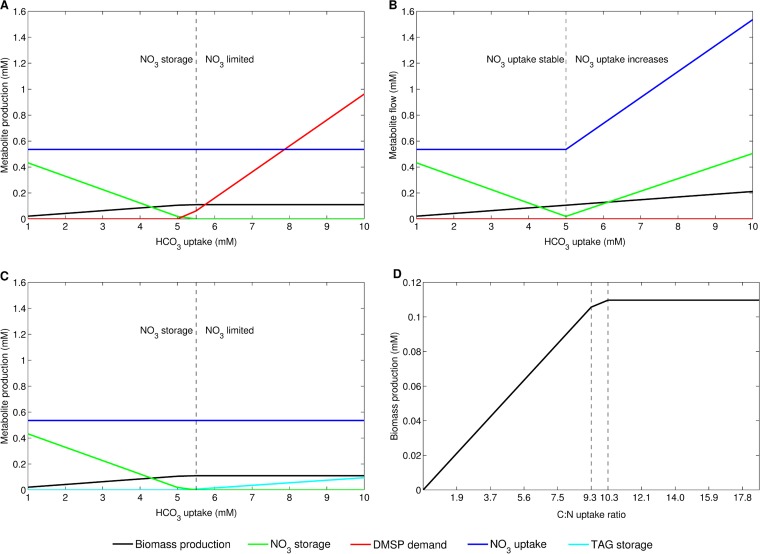FIG 5 .
Model predictions at various HCO3 conditions. With increasing HCO3 concentrations, NO3 is limiting and is completely required for biomass production; subsequently, NO3 storage declines. Excess carbon is released as DMSP, which is the only reaction in the model allowing carbon secretion (A). Panel B shows biomass production and NO3 storage when NO3 uptake is increased linearly shortly before NO3 becomes limiting (at an HCO3 uptake level of 5 mM). Simulation results when carbon can be stored as chrysolaminarin or TAGs are depicted in panel C. Here, NO3 uptake is constrained and constant as in panel A. The model predicts that excess carbon is stored in the form of TAGs. (D) Effect of the carbon/nitrogen (C/N) ratio on biomass. Within this simulation, carbon uptake was varied from 0 to 10 mM and nitrogen uptake was kept constant at 0.535 mM. Biomass production increases at C/N ratios under 10.28 and stagnates at ratios over 10.28 because of limiting nitrogen availability. Note that for all of the simulations shown, the available CO2 was forced to be taken up.

